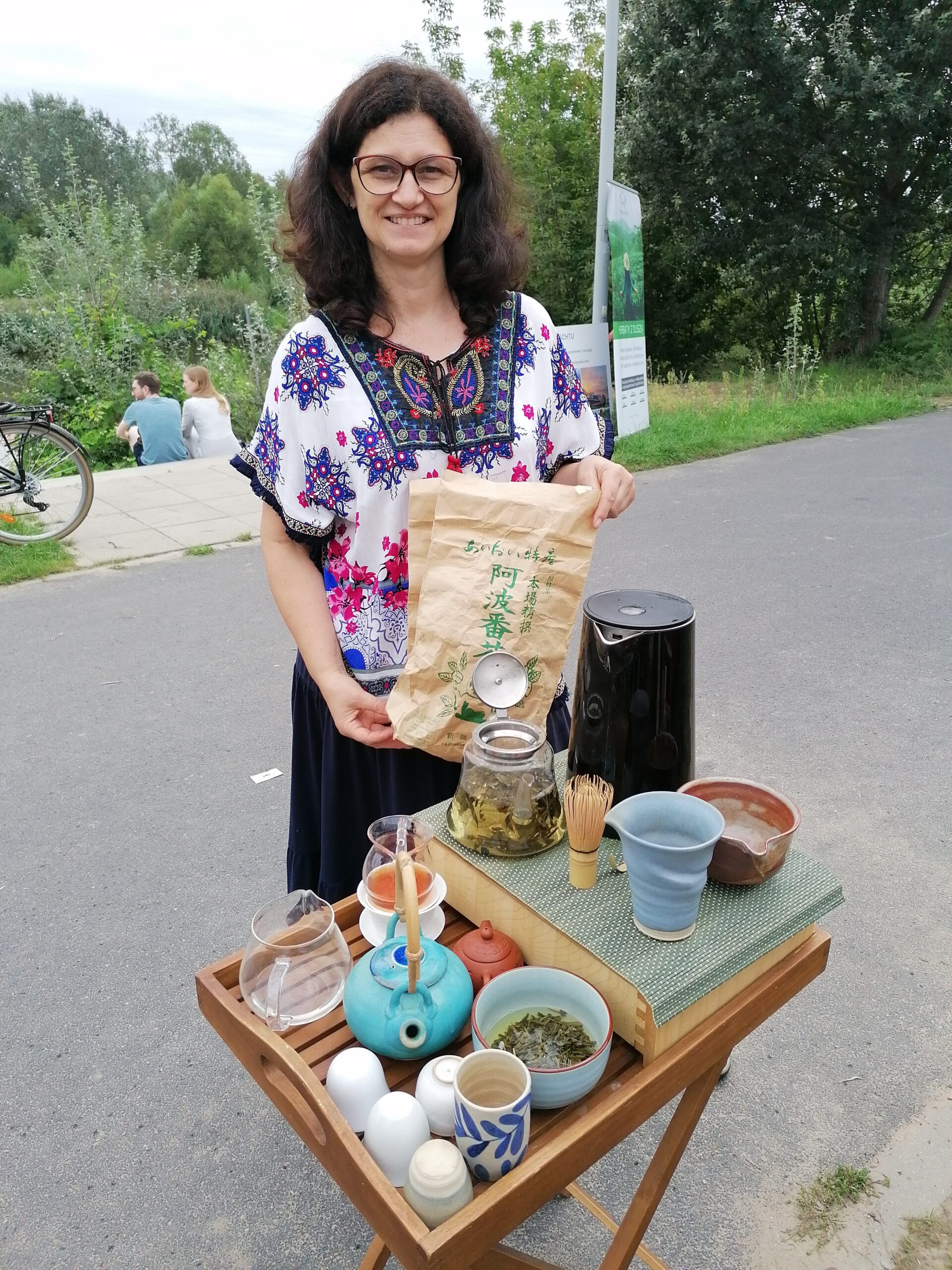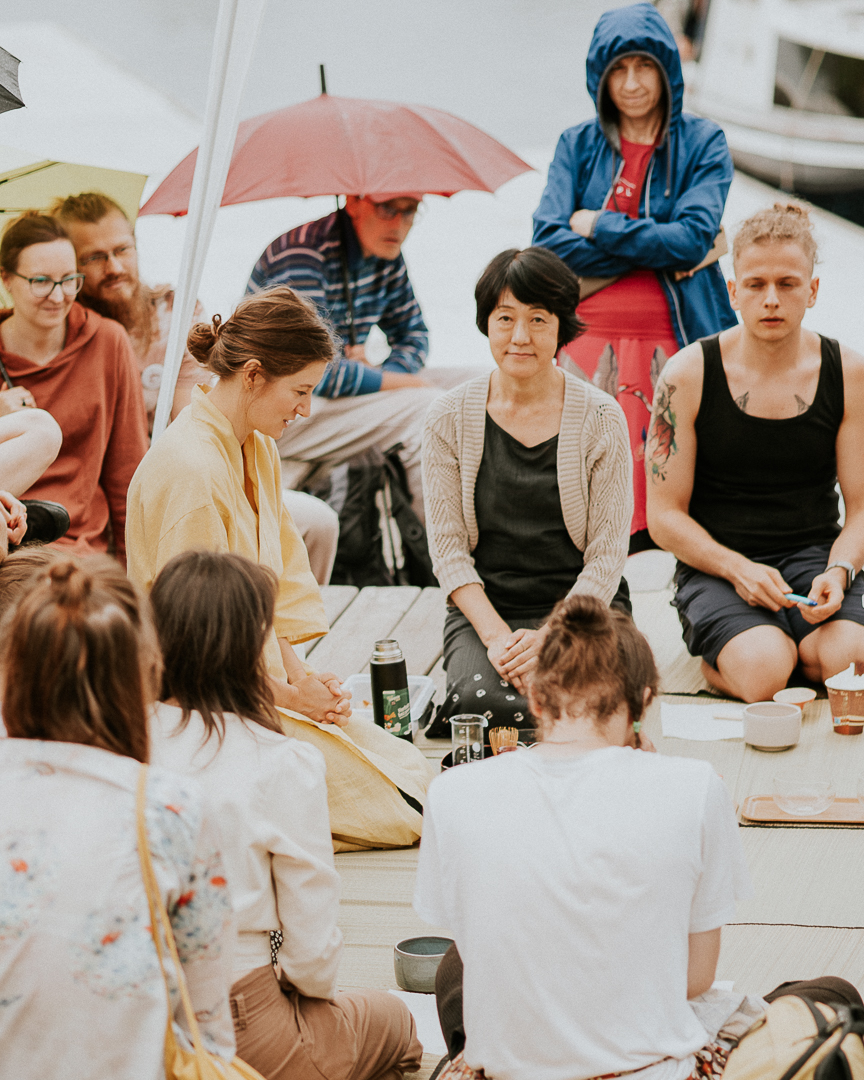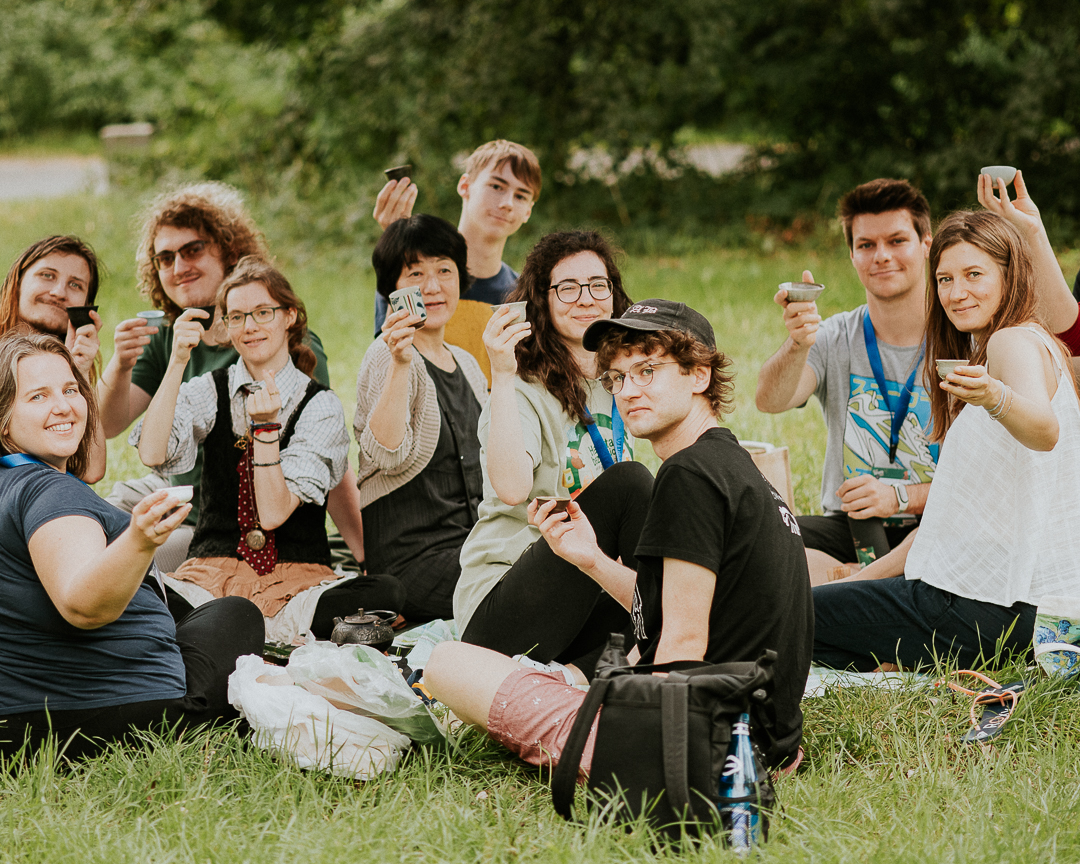If there’s something about tea that always amazes me is its unmatched ability to connect people all over the world, crossing all borders, all the languages, all the cultures. Tea connects not only people but also (and mostly) their souls, and, in the end, with just one silent sip we get to know each other deeper than with thousand words. During the last weekend of August, Saturday 26th and Sunday 27th, I’ve been invited to Zaparzaj Tea Festival in Poznan, Poland.
My participation in the Festival finds its roots back in 2021, when I virtually met Martyna Kubiak, one of the organizers, during the GJTea Tea Marathon! She told me about Zaparzaj and since then I’ve been thinking about participating, one day or another, and meeting her and all the other Polish tea lovers. This year was a lucky one and finally I got the chance to take some days off and visit Poznan and its Tea Festival. I didn’t go there only as a viewer (as I initially thought!) but I had the chance to host my own workshop as well, representing my Japanese shop and Tearoom Ikiya. I was extremely excited, since this was going to be my very first workshop outside Italy and also…my very first Tea Festival! I went there with an open and empty mind and my only wish was to fill it with memories and experiences.

Zaparzaj 2023, at its 9th edition, welcomed at Ogrod Szelag park tea lovers, potters, tea vendors, tea instructors etc. from all Poland and also from other countries, giving a cosmopolitan yet truly authentic feeling to the whole event. One could find any kind of tea and teaware, from Kachemire to Taiwan, from Nepal to Etiopia, to Japan and so on. I was mostly interested in Japan-related activities and goods, so I tried to take part to as many workshops/lectures/tastings as I could and I had so much fun! I was also looking forward to meeting in person all the friends I got to know online during the pandemic!
I held my own workshop on the first day of the Festival, Saturday morning. “Rare Japanese tea tasting” was about four teas that are normally hard to find outside Japan and few people had the chance to try: sakurabacha (cherry tree leaves), amacha (sweet hydrangea leaves), zairai organic oolong (from a 50 year old wild tea bush) and mecha (young tea buds). In front of me, many curious and kind participants, with whom I exchanged a lot of interesting ideas and thoughts about tea farming and manufacturing, brewing methods, tea history and future.
After my tea tasting I flew to Andrzej Bero’s raku firing workshop. I was really looking forward to it, both because I’ve never seen live or tried myself ceramic firing and also because it had been held by the talented and experienced Bero. He provided us with pre-fired cups and chawan which we had to decorate with transparent glaze and oxide. After the iron bin was heated, the cups were put inside and fired for about 20 minutes (we could see the red and shiny glaze from the peeping hole). Then, with gloves and claws, we moved the red-hot cups inside another bin and covered them with organic materials such as cardboard and grass. After another 20 minutes, the cups had to be cooled down in water, revealing their final color, crackling and unique designs! Everyone did an amazing job!
Bero was also one of the many ceramic exhibitors at the Festival. His works are appreciated Europe-wide and once I saw his teaware I couldn’t but agree. Small kyusu, teacups, teapots, trays, gaiwan, shiboridashi and much more, finely crafted with a distinctive Sino-Japanese taste: clouds and waves patterns, earthen colors, rough yet pleasant texture. Next to him, another Japanese style inspired and talented artist, Michal of Oyu Ceramic. I was fascinated by his elegant teaware, by his rustic and deeply authentic style. Chawan, kyusu, cups and shiboridashi were characterized by the peculiar Shino glaze, with its milky white cracked texture and orange, charcoal gray spotting. He often uses wild Polish clay, which he finds and wheel throw himself and finishes with ash glazes and soda firing to create spectacular effects. His corner gave me that feeling when you walk down a side street in Japan and you run into a small shop with precious rarities. Another potter that got me with his wide variety of teaware was Clayoncy. Damian’s works range from lightweight colorful teacups, to tiny kyusu, to creative houhin and shiboridashi.
One thing that surprised me is the true kindness of all the artists, the joy they had talking about their works, their techniques and sharing the story behind them. Before buying a teapot, for example, I always get to try it and see how it poured and if it was the right fitting for me. I’ve never had a chance like this in my hometown!

In the afternoon, after a heavy downpour that made everyone run for cover, Japanese Tea Ceremony expert, Mrs Yukiko Okuno held a workshop about matcha culture and drinking manners: what is matcha tea, how to correctly whisk matcha to create a nice foam, how to bow and thank before drinking, hot to turn the chawan and enjoy it not only with your tastebuds but also with your mind.

Sunday was the second day the of the Festival, way busier than the previous one! I spent the morning talking with tea exhibitors and tasting their teas. I again focused on Japanese teas, trying to find some new and tasty teas, which I’ve never experienced before. I’ve had a pleasant talk with HerbatyCzas from Warsaw and I tried for the first time the rare Awabancha, a fermented country style tea, originary from Tokushima. Its taste is mild and slightly sour, similar to Goishicha. They also have some delicious Japanese oolong and organic kamairicha (pan-fired green tea). One of my favorite was Mr Toshifumi Shibamoto “Sakura” kamairicha: notes of cherry blossom leaves and papaya, together with beautifully processed leaves, made this tea truly unique.

In the afternoon I attended a workshop held by Martin of Nagomi Tea (from Czech Republic) on Japanese Oolongs. He explained first what an oolong is: a semi-oxidized tea standing in between green and black, a tea that combines Japanese and Chinese elements. Then Martin showed us how climate (humidity, temperature etc) has the most important role in oolong processing, maybe even more than the oxidation level itself. In fact, is nearly impossible to have the same exact tea every year, because even following the same procedure, the flavor may not be pleasant enough and so some adjustments are required. For example, a great 2023 tea, highly oxidized, may taste better if just slightly oxidized the next year. We tried two Japanese oolong: one with low oxidation and one zairai with high oxidation. The first one, oolong Surugawase ff 2023 from Isagawa, was really delicious! They also have one-of-a-kind Japanese teas, like tea cakes and kamairi-oolong called Houshucha (processed like an oolong and then pan fired like a kamairicha)
After this workshop I went to the last event of the day, “Tocha”, a matcha tea “fight” hosted by Martyna. All the participants sat on tatami and drank, twice, 4 matcha from 4 different regions. The first round was a pre-tasting, to get used to the aroma of every single matcha and the second one was “blind”, and we had to recognize and pair each tea with the corresponding one drank previously. The game was lit and we had so much fun! Martyna recreated everything as if it was a real Tocha of ancient times: matcha wrapped in triangular washi bags, wooden sticks to write down the answers, tales about matcha and tea games origin…

Between one activity and another, I had a spontaneous tea time in one of the designated area, sitting on a blanket in the park, surrounded by the beautiful and relaxing river landscape. It started as a tea for three, but then more and more people joined us, creating a welcoming and heart-warming atmosphere. Everyone shared their favorite tea with the others, together with their own stories and thoughts. At one moment, under a soft rainy sky, accompanied by the sound of the river, I felt for the very first time, the purest sense of communion, of gratefulness, of kindness that made my heart burst with joy. I enjoyed tea with my body and friendship with my soul.
When the Festival finished, on my way back home to Italy, I felt my heart so full, so light, so enriched in positive energy. A true sense of happiness. Just the idea of sitting down on the grass, sharing freely a cup of tea with newly met tea friends, or asking about a tea I never drank or about the clay used for a teacup and getting to know not only the answer but also the story behind that person’s passion… It’s just beautiful and soothing for a tired soul. And this, THIS is the spirit and the power of tea. The power of sharing selflessly. The feeling of being close even if living far away. The joy of appreciating the daily little things in life. Thanks from the deep of my heart for this unforgettable experience!
Article by our Tea Fellow and chanoyu practitioner Antonella Teolato. Find out more about Antonella and her Japanese tea room Ikiya here.
Photos by Zaparzaj Tea Festival team.

